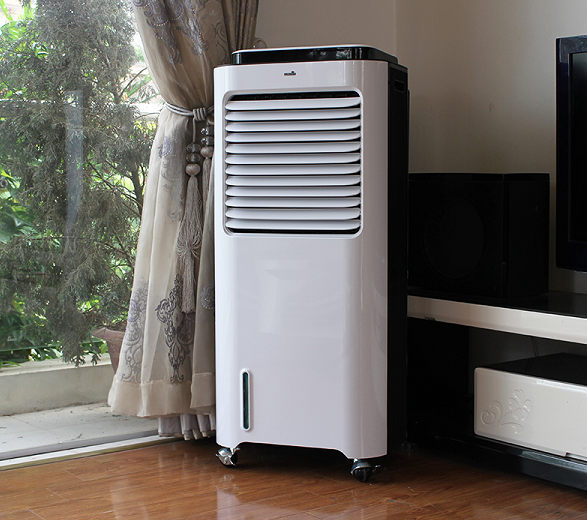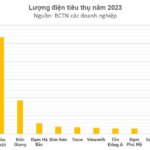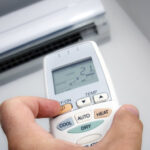Northern Vietnam has just experienced one of the most intense heat waves of the year so far. According to the National Center for Hydro-Meteorological Forecasting, temperatures in the Red River Delta and midland provinces of the North reached over 35 degrees Celsius. The highest temperature recorded was between 37 and 39 degrees Celsius, with some places even reaching 40 degrees Celsius.
During this extreme heat, the selection, purchase, and use of cooling appliances have become a top priority for families. Currently, in addition to fans and air conditioners, a device called an “air cooler” has also gained popularity in the market.
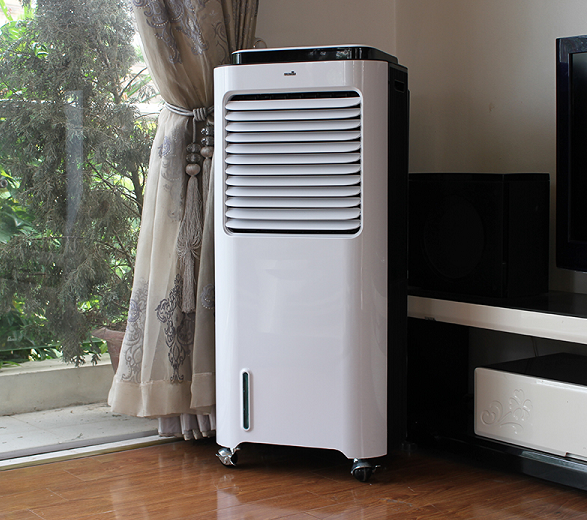
Illustration photo
Dubbed as a combination of the two traditional appliances, the question arises: Is the air cooler effective in cooling? And in terms of power consumption, does it use more electricity than an air conditioner? These are the queries that many users have about this device.
To find the answers, let’s look at some practical measurements and experiments.
User Experiments Provide Insights
On YouTube, a user conducted an experiment to measure the electricity consumption of their air cooler. Specifically, the device used in this experiment had a maximum power of 180W, a water tank capacity of 60 liters, and an airflow of 5000m3/h, as indicated on the product label.
The user measured the electricity consumption while operating the air cooler at its highest fan speed, with the additional “Cool” enhanced cooling feature and swing function turned on. The specialized meter displayed a reading of 0.144 kWh. This indicates that if operated continuously with these settings and features, the air cooler would consume 0.144 kW of electricity per hour.



User performing the experiment to measure the electricity consumption of the air cooler (Screen capture)
Based on this data, the user multiplied it by 24 hours in a day, resulting in the air cooler consuming approximately 3.5 units of electricity per day. Further multiplying by 30 days in a month, the final figure comes to 105 units of electricity.
Regarding air conditioners, another user conducted a similar experiment, and the results were quite comparable to those of the air cooler. Specifically, in their experiment, the user also employed a specialized measuring device, directly connected to the air conditioner in use.
The results were presented in a detailed statistical table, showing that after 12 hours from 9 pm to 9 am the next day, the air conditioner consumed approximately 1.7 kWh. Multiplying by 2, we get approximately 3.4-3.5 units of electricity consumed by the air conditioner in 24 hours.

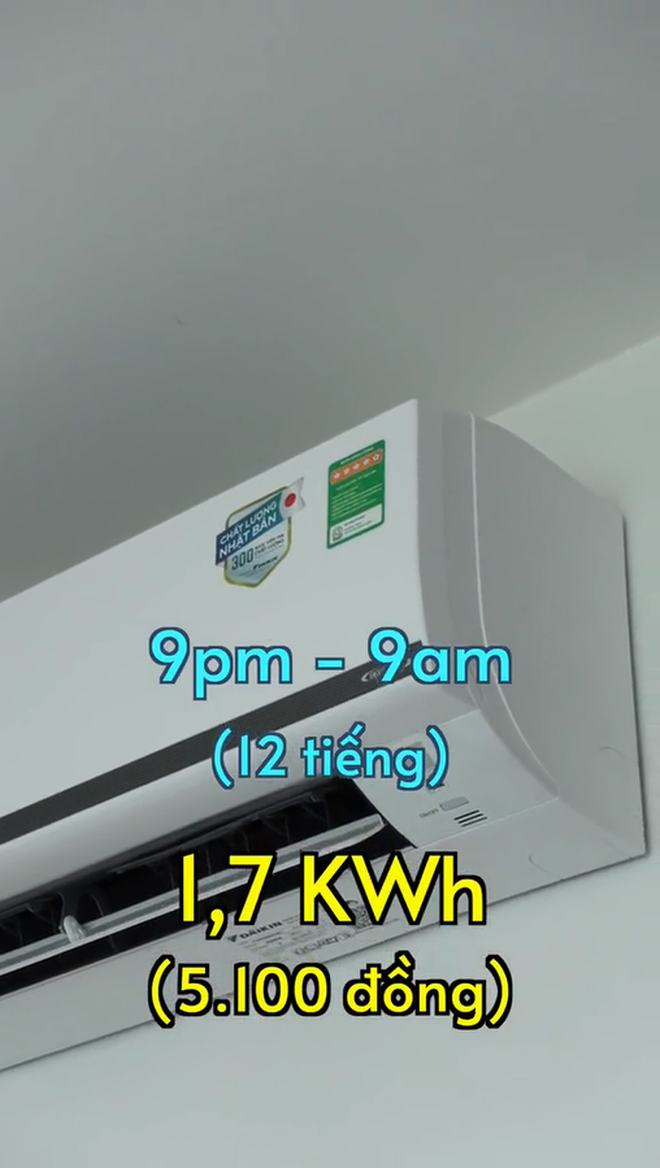
User measuring the electricity consumption of the air conditioner (Photo by Duy Luan De Thuong)
As evident from these experiments, the two devices consumed a similar amount of electricity. However, it’s important to note that these experiments were conducted on specific units. In reality, each air cooler and air conditioner will have different power ratings and cooling capacities. Additionally, factors such as space, weather conditions, and the features utilized will also impact the electricity consumption of these appliances.
When to Choose an Air Cooler?
Given the similar electricity consumption, when should users opt for an air cooler instead of a conventional air conditioner?
Firstly, it’s essential to understand the operating mechanism of an air cooler. This device, also known as an evaporative air cooler or swamp cooler, differs from air conditioners in that it utilizes water evaporation to lower the temperature instead of using refrigerant gas to produce cold air.
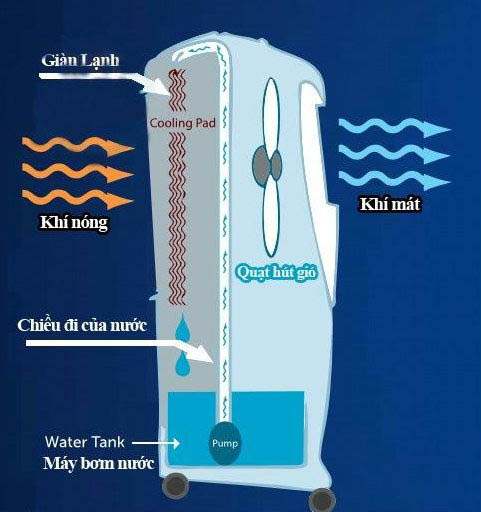
Illustration of the operating mechanism of an air cooler
Specifically, while it blows out air like a regular fan, the air produced by an air cooler is significantly cooler due to the presence of water vapor. Additionally, air coolers are equipped with a special cooling pad, which is considered the device’s “secret weapon.” Hot air is drawn into the cooler, passes through the cooling pad, and is then blown out into the environment.
According to experts and technicians, the cooling capacity of air coolers is generally not as comprehensive and optimal as that of conventional air conditioners. However, they still provide a reasonable level of cooling and remain a viable option for the summer season.
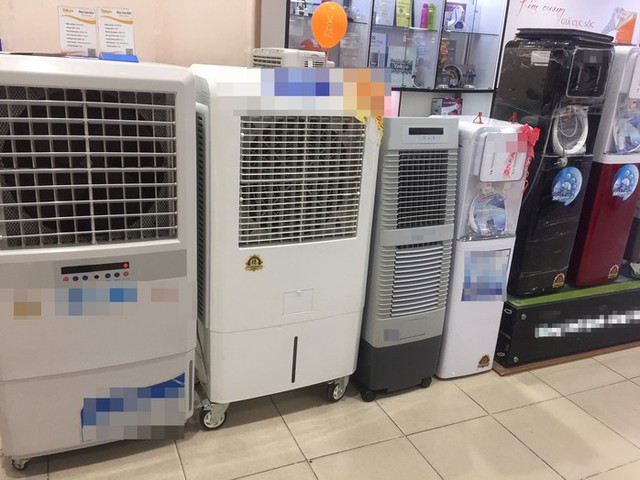
Illustration photo
Air coolers are suitable for small to medium-sized spaces ranging from 15 to 50 square meters. They are easy to install, portable, and require less time and effort for installation compared to air conditioners. When using an air cooler, users don’t experience the dryness associated with air conditioners, and there’s no need to seal off the space completely, avoiding any stuffiness.
Lastly, air coolers are significantly more affordable than air conditioners. Families can consider purchasing air coolers with additional features such as air purification and odor removal if desired.
The Energy Crunch: How Will Soaring Electricity Prices Affect Vietnam’s Industrial Giants?
For energy-intensive businesses, rising electricity prices will undoubtedly hike up operational costs.
The Energy Bill Blues: How Ho Chi Minh City Residents Are Winning the Battle Against Soaring Costs.
As reported by Ho Chi Minh City Electricity Corporation, residential electricity consumption witnessed a decline in July 2024 compared to the preceding months marked by scorching heat waves.

